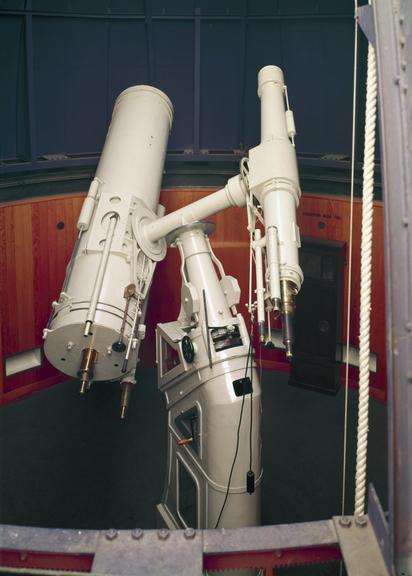"Twin Equatorial" Telescope
1885

"Twin Equatorial" Telescope, 1885. Made by Sir Howard Grubb for Dr. Isaac Roberts, F.R.S., consisting of a 20in. Reflecting Telescope and a 7in. Refracting Telescope (by Cooke) mounted together on one equatorial stand. With Grubb electric control gear, spectroscope, additional 20in. mirror and other accessory pieces (one 20-inch disc slightly chipped at outside edge (Note: mounting cradle purchased from M.A.S.S. Tools Ltd 17/1/62 (#58) ScM 4429/3/4
Dr Isaac Roberts, an amateur astronomer used this telescope to taken pioneering astronomical photographs from 1885. He resolved spiral detail in the Andromeda Nebula; now know to be a nearby galaxy, an island of countless stars. Made by Howard Grubb in Dublin, the massive mounting carries a reflecting telescope of 20-inch aperture and a refracting telescope with a 7-inch diameter lens. Installed first at his home near Liverpool, it was later moved to the less smoky skies of Crowborogh, Sussex. In 1887, Roberts was invited to attend the first international conference in Paris on celestial photography. Here astronomers decided to embark on the, 'Carte du Ciel' an ambitious project to photograph the whole sky in unprecedented detail.